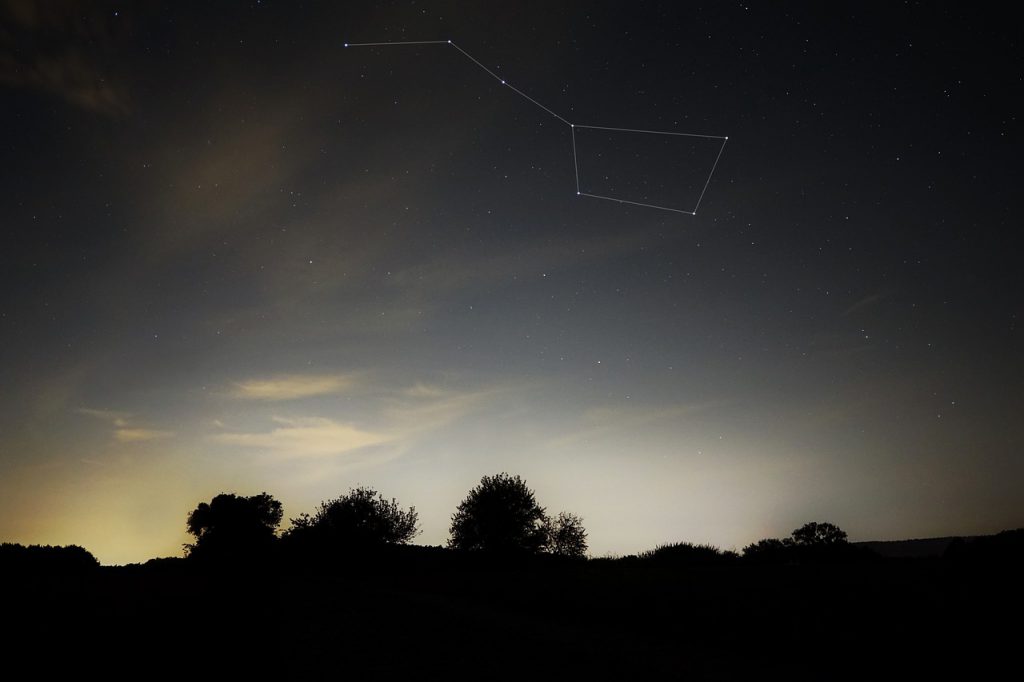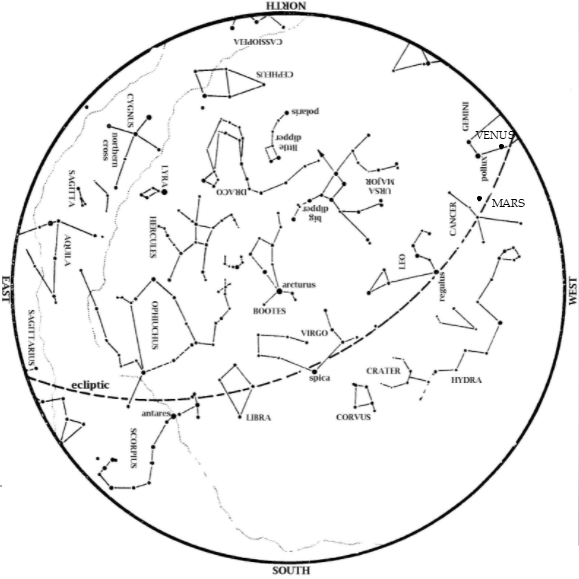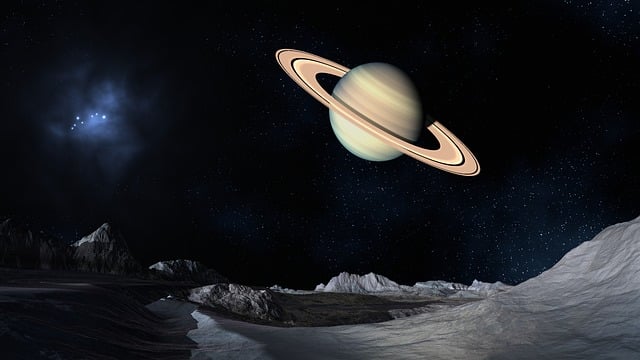Mars remains almost as bright as the stars around it in May 2021. And Mars is low in the west—still visible right as night falls.
Jupiter and Saturn are the morning sky this month, low in the south.
Venus also slowly emerges into the evening sky this month. Venus outshines everything except the Sun and the Moon, so it is unmistakable low in the WNW at dusk.

Spring stars are high in the south and west. A distinct backwards question mark shape outlines the mane and forepaws of Leo, the Lion. Three stars forming a right triangle are to its upper left; they mark Leo’s hindquarters. The Big Dipper is as high as it ever gets in the north at dusk. You can extend the curve of its handle to ‘arc to Arcturus’ and then ‘speed on to Spica’. These stars high in the east and south, respectively, by dusk tonight. Arcturus, by the way, is the fourth brightest star we ever see at night, but the brightest one Americans ever see in all of June and July.
In the east, look for the enormous Summer Triangle, consisting of the stars Deneb, Vega, and Altair. This triangle is up all night long in June and July, hence its name. Scorpius, the Scorpion, is in the southeast at dusk. Sagittarius, the Archer, known for its ‘teapot’ asterism, rises just after dusk on June 1, but is up by nightfall on June 30.

The Big Dipper is high in the north. From the Big Dipper’s handle, arc to Arcturus and then speed on to Spica in the south. Cygnus, Lyra, and Aquila form the Summer Triangle in the east, as Scorpius and Sagittarius rise in the southeast. Summer has arrived. In early June, you can watch Venus and Mars set in the west northwest in evening twilight.
Moon Phases in June 2021:
Last Quarter June 2, 2:24 a.m.
New June 10, 5:53 a.m.
1st Quarter June 17, 10:54 p.m.
Full June 24, 1:40 p.m.
The New Moon of June 10 passes in front of the Sun, causing an eclipse. However, the Moon is close to as far from Earth as it can get (apogee). Therefore, it appears too small to block the Sun completely, and the eclipse is annular, not total. Also, you must be in the eastern US, Canada, Europe or Siberia to see any part of it, as the event happens before sunrise for us.
At 10:32 pm on Sunday, June 20, the Sun is directly overhead as seen from the Tropic of Cancer. This means that Earth’s north pole is tilted as much as possible towards the Sun, making this our summer solstice. On this date the midday Sun is as high as possible in our sky—virtually overhead—and we have more daylight than on any other day of the year. Below the equator, the opposite is true. There, the midday Sun is as low as possible in the sky, and there is less daylight than on any other day of the year. For them, June 20 is the winter solstice.
Our George Observatory is now open every Saturday night for observing!
Clear Skies!
Look back to May 2021 Sky Happenings.





